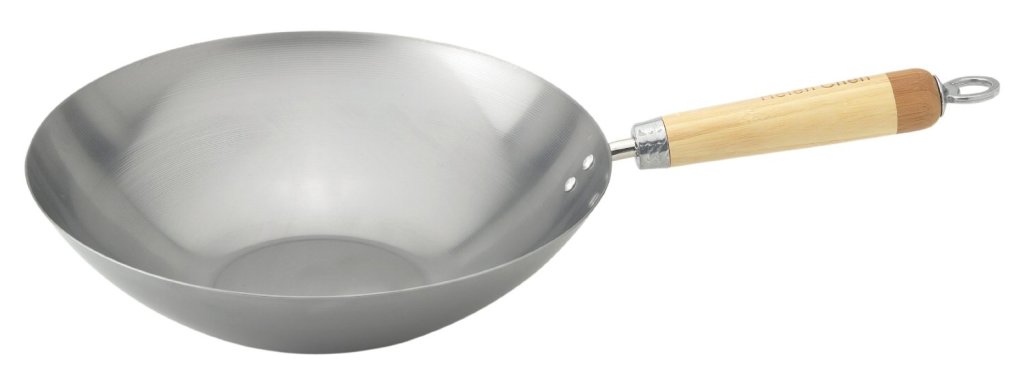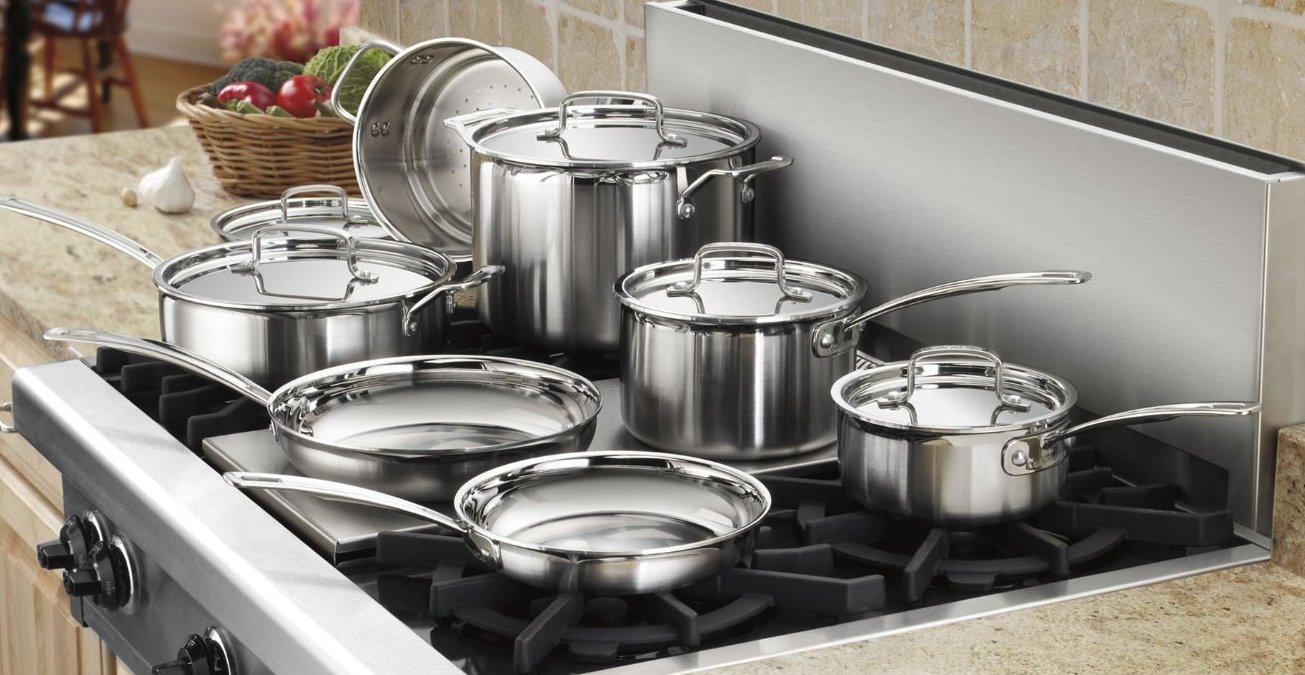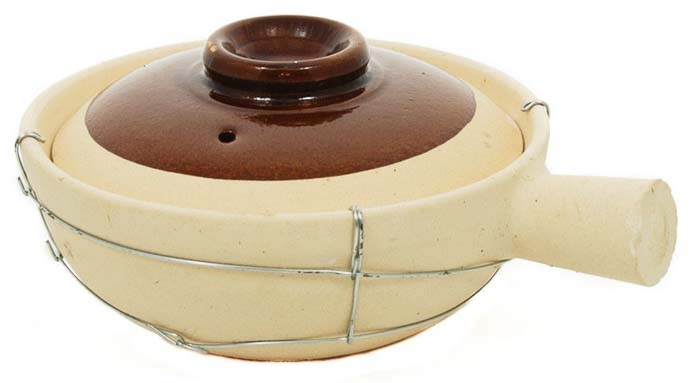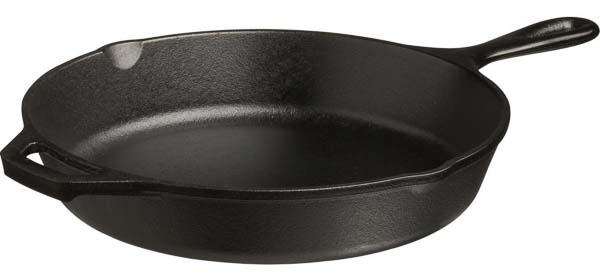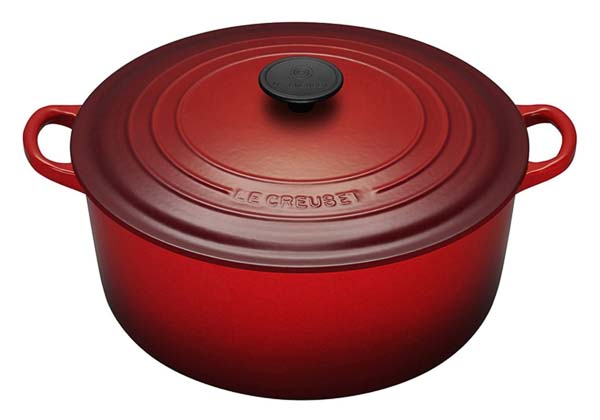When you move to a different country you get to buy a new set of cookware. That’s the rule. What do you mean there’s no such rule? Yes, there is. I just made it up. No buts. Where were we? Right. So, let’s say you need a new cookware, and you can get any kind you want, what would it be? Would you get a set or buy ’em separate? Would you buy for short term or for long term? Would you go stainless steel or non stick? Cast iron or ceramic? Aluminum or copper?
My brains were having the debate of the century trying to decide which type to buy. First I went with non stick. I read a couple of articles on cookware and decided maybe I’d go with ceramic. I talked to some people at Sur La Table and quickly changed my mind to stainless steel. I read a few reviews and I went back to non stick again. This went on for the longest time. You can imagine the horror I had to go through (cue Psycho theme).
In the end, I had to make a decision. I needed to cook. I needed food.
In the end what did I decide? Well folks, meet my cookware.
1. Helen Chen’s 12″ carbon steel wok
Use: Every day stir fry and occasional deep fry.
Size: 12″ is perfect for cooking for two but I sometimes cook in big batches, therefore I would prefer the 14″. But 14″ doesn’t fit my sink, so 12″ it is.
Shape: Flat bottom but I may buy a round bottom if I see one. Round bottoms are the best kind for stir fries – the way your hand can move the wok ‘chuan’ (aka spatula) downwards and forwards easily to stir and flip the food .
Handle: One long wooden handle instead of two rings because it’s easier for me to lift the wok.
Make: Carbon steel because they can be heated over high heat without destroying any coating (which shouldn’t be there in the first place). It’s light and it conducts heat brilliantly.
Care:
Seasoning for the first time and subsequent (if any) is super easy. Basically a thin layer of oil is rubbed onto the wok. That oil ‘burns’ onto the surface of the wok which creates a brown/black hue called patina. This natural patina will eventually make your wok non stick.
Wash is even easier with hot water and a brush or sponge (not those abrasive metal kind). Scrub well and never use soap. Soap is bad for patina. Dry the wok thoroughly and rub a thin layer of oil after your last wash of the day.
Use: Solely for eggs, pancakes, French toasts, and crepes.
Care: The highest heat this skillet is allowed to go is a medium. I never use metal cooking utensils on this.
Size: 12″ is perfect for making breakfast for two. I can fit more food compared to 8″ or 10″ pans.
3. Cuisinart MultiClad Stainless Steel Cookware Set
I bought my set from Costco which is similar to the one depicted in the picture sold on Amazon. Initially, I thought of buying these pieces separately but found a set that was cheaper collectively. Tri-ply stainless steel is essential for even and consistent heat conductivity and retention. It heats up fast and evenly with no hot spots. I love them to pieces.
a. 1.5 & 3 quart saucepans and 8 quart stockpot: I boil water a lot (for making noodles or dumplings) so I opted to go for stainless steel saucepans and stockpots since I’d like to put them on high heat for faster boiling. I make broth, stew, or cook larger volumes of braising foods in my 8 qt stockpot.
b. 8″, 10″ and 12″ skillet: If I could choose, I’d get rid of the 8″. It’s the least used piece in the set. The other two are mainly for searing meat and sometimes finishing them off in the oven at high heat therefore all parts of the pieces must be able to withstand high heat. So no silicone or plastic. I like the caramelizing of the meat and the sticky brown bits (aka fond) left on the skillets. It can be use to make sauces or gravy after. Love love love them. (Amazon’s set has a steamer instead of a 12″ skillet)
c. 3 quart sauté pan: I mostly braise in this or cook food that has a smaller volume compared to cooking in the stockpot.
Care:
a. Vinegar to get rid of hard water stains.
b. Baking soda or Barkeepers friend for stubborn burnt stains.
c. Soaking in hot water is your friend.
For more in depth information, click here.
4. Chinese Clay Sand Pot
Type: Two 2-quart clay pot
Use: Finishing braising or rice dishes (crisp up the bottom of rice).
Care:
a. Seasoning: Submerge pot and lid in cold water overnight, pour out water and dry naturally. Fill pot with water up to the top and boil for half hour in medium heat. Let cool, pour out the water and dry naturally.
b. Heat: Use low heat when starting and increase gradually to medium heat to avoid cracking. Let cool before cleaning.
You can get these pots from any Asian Supermarket. The quality is good and they’re inexpensive.
As you can see, I ended up not choosing sides. No more non stick vs. stainless steel debate. I got different types of cookware for different uses and so should you if you’re in this predicament. Start by asking what you’d normally cook. Different types of food and even cuisine demands different types of cookware. Don’t do unnecessary horror debates like I did.
5. Lodge 10″ Cast Iron Pan – Searing steaks in a cast iron pan creates a better crust. Besides, I could bake in this baby.
Not seasoning the first time, letting it be washed too much with soap as well as letting it sit in water is a no no. Other than that, upkeep is pretty straight forward like regular pans.
Future buys
6 quart enameled cast iron Dutch oven – I can braise, stew or roast food. It’s nonreactive and is excellent at heat retention. Its tight fitting lids help retain more moisture in the food.
If I had more space, these would already be in my kitchen. Oh, I do love you cast iron.
What types of cookware do you own and how do you utilize them?
Disclaimer: This post contains affiliate links.

